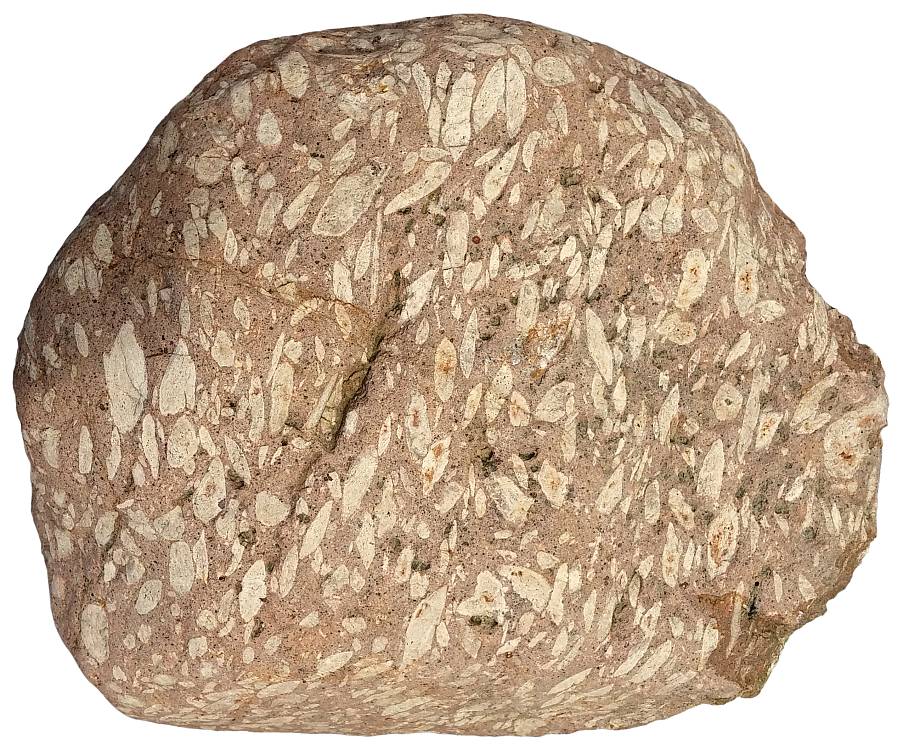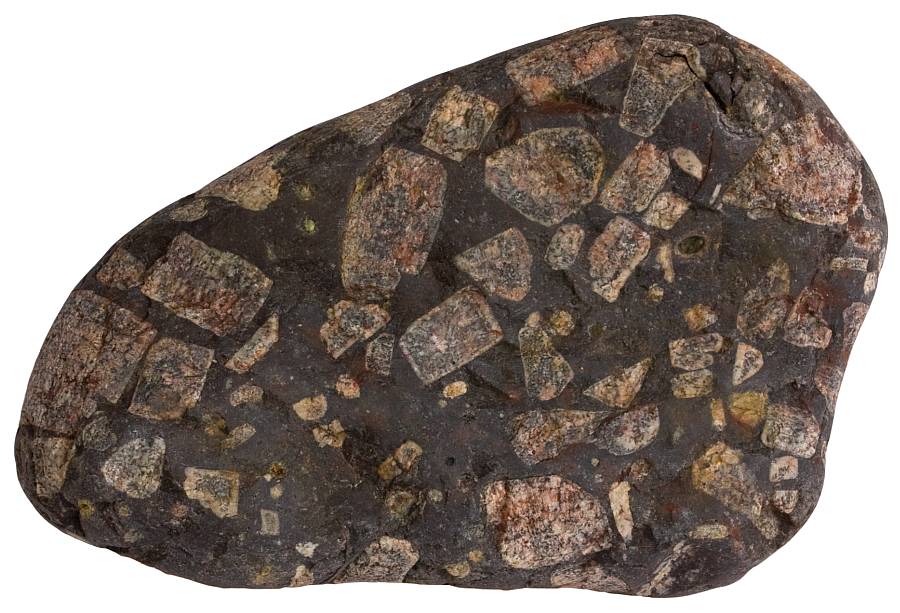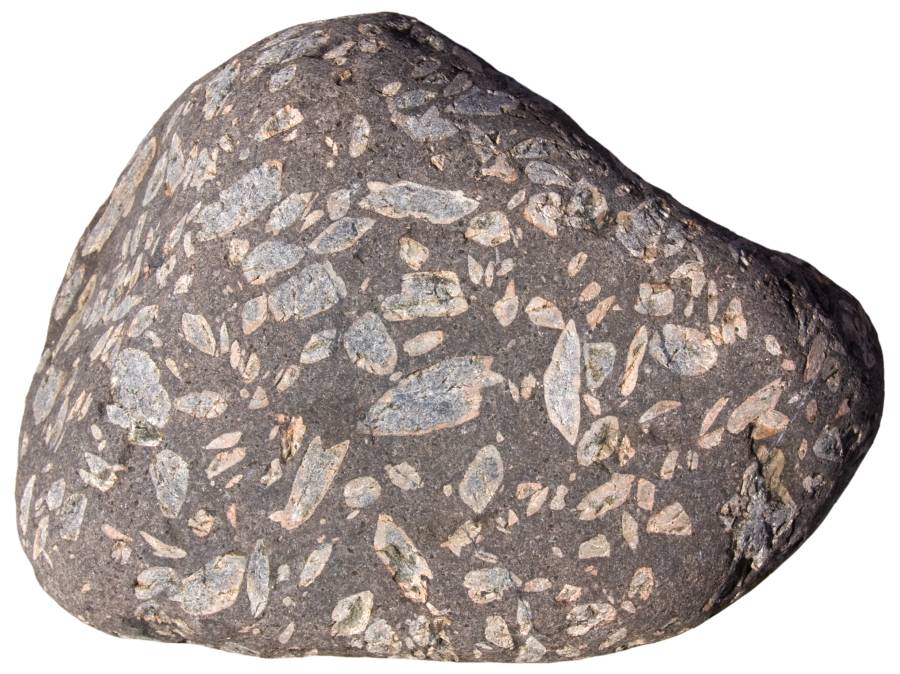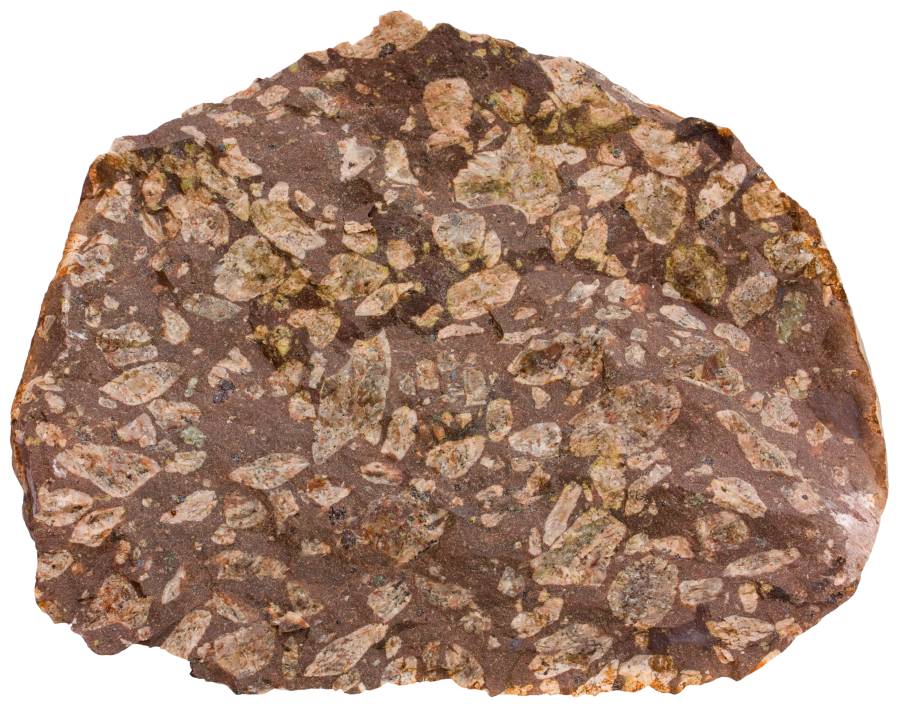Rhomb-porphyry is a porphyritic igneous rock with abundant wedge- or lens-shaped anorthoclase (feldspar) phenocrysts. Rhomb-porphyry is a rare rock type. The most well-known is the rhomb-porphyry from the Oslo Rift in Norway. Similar rocks are known to exist in only two other locations: The East African Rift Valley and the Antarctic1. They are all volcanic areas with active or former (when the rocks formed) continental rifting.

Rhomb-porphyry has an attractive appearance and is thus famous not only among geologists. The rock is from the Oslo Rift, Norway.
Rhomb-porphyry is compositionally trachy-andesitic (latite) which corresponds to plutonic rock monzonite.
Although rare globally, these rocks are very common in Norway just south-east of the capital Oslo. There are numerous lava flows (over 70) and many dikes. Lava flows cover over ten thousand square kilometers and dikes may reach thicknesses up to 80 meters. The most voluminous flow unit consists of about 1,000 cubic kilometers of lava. This is huge amount which has no historic analogues although other pre-historic lava flows of that magnitude are known. Thicknesses of a single lava flows vary between 4 and 130 meters1. The volcanism that produced rhomb-porphyry lava started about 295 million years ago and lasted for 20 million years2. Rhomb-porphyry lava also has a plutonic version known as larvikite which is highly valued dimension stone because of large feldspar crystals with bluish iridescence.
Rhomb-porphyry should not flow easily given its high silica content and abundance of phenocrysts. Yet it covers huge area as both subaerial lava flows and dikes. Field observations indicate that rhomb-porphyry lava behaved pretty much as basaltic lava is supposed to behave. This is in stark contrast to modern volcanoes with trachy-andesitic composition which tend to erupt violently and produce more ash than lava. To this day it remains somewhat of a mystery. However, we do know that rhomb-porphyry has abnormally high fluorine (0.2-0.45 %) content which might have lowered the viscosity of the magma. Continental rifts are known to produce odd volcanic phenomena. Perhaps the most well-known is a carbonatitic magma which compositionally is more like a limestone than normal igneous rock. Rhomb-porphyry is just another rock from a continental rift with unusual characteristics.

Different lava flows have different geochemical fingerprints and they also differ in appearance. Not all of them have rhomb-shaped phenocrysts. Width of sample 7 cm.

It is actually easy to see that rhomb is not the best analogue to describe the shape of the phenocrysts. They are highly variable but none of them seems to be rhomb-shaped. I would say that the most beautiful ones resemble lenses or wedges.

Fresh surface of a rhomb-porphyry sample from Norway. Width of sample 13 cm.
References
1. Ramberg, I. B. et al. (2008). The Making of a Land – The Geology of Norway. Geological Society of Norway.
2. Sundsvoll, B. et al. (1990). Age relations among Oslo Rift magmatic rocks: implications for tectonic and magmatic modelling. Tectonophysics. Volume 178, Issue 1.
Leave a Reply